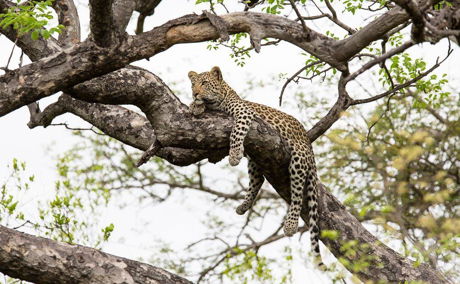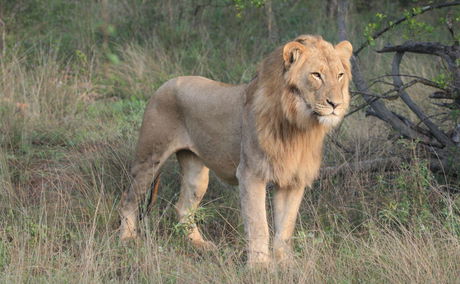The Daktari children wildlife club members, with a group of 10 their members, visited us for a game drive. I found out on arrival that only 2 of the Daktari children wildlife club members had seen a lion in the wild... No one in our car has seen a “live” rhino but me! I am on Game drive in the Greater Makalali Conservancy. My game viewer is filled to the brim, not...
Elephant Leadership

Wildlife often shows astonishing leadership - as well as team working skills. Elephant significance leadership is a great example. All elephant herds are led by a female elephant, the so-called “matriarch”. Her daughter is groomed and trained throughout her live to take over when the matriarch will eventually be too old to lead the herd. At this time the old matriarch will stay behind to calmly lay down and die so not to burden the herd that needs to be on the move almost 24 hours a day.
Elephants do career planning and on the job training and have an experienced new leader ready at hand when something happens to the current matriarch. We call this; ” elephant significance leadership” and this way of leading members of the herd through the use of significance is an inspiring example for us when we are leading a business team, sports team or any other team in a company, organization or school. When we possess a skill or knowledge that is important for any business process or work task. Elephants remind us that skills and knowledge are only effective and efficient on the long term when it is shared.
An elephant matriarch will show by leading through “Elephant significance leadership” that each member of the team is valued and teach other elephants how to find water, where to go for the best nutrients and what to do to protect the herd when under threat. Amazingly it does not stop there. Elephants, both male and female, show (often synchronized) moments of stillness where they all stop simultaneously with whatever they are busy sometimes accompanying with raised trunk to smell the air. They listen, smell and look around them using their senses to the fullest at these moments to become aware of each-other, their surroundings and the activities and direction of the herd. Being around these magnificent animals at that time gives you a glimpse of their raised awareness, calmness and great determination.
Elephants show us that time to stop, step back and reconsider or reflect if the activities that keep you and your team busy all day are the right ones and really do contribute to reaching the business and your personal goals. These are only but two examples and many other animals in the bushveld show us all amazing adaptations or striking teamwork behavior as well. So next time you spend time in the wilds with an animal remember to ask yourself what the animal can teach you and you’ll be surprised by the answer. With time you will find that your interpretations will become more meaningful. Give the animal enough space so it is gladly able to continue with its normal natural behavior and thank the animal when the encounter and lesson is over.
Further Reading
In South Africa the term “spoor” is mainly used to indicate the tracks of an animal or person. Spoor can be simple tracks in the sand of a riverbed but it goes further than that. It can also include flattened grass, scrapings on trees, scattered seeds or maybe broken off branches. Even the smell that an animal left behind belongs to the kingdom of “spoor”. This short tale explains how trailing spoor...
This is a story about lion leadership. It was at the midst of summer six years ago that I saw the two male lions crouching down in the high Guinea grass (Panicum maximum). They were freshly transported into Makalali from a private game reserve around Kgaligadi National park close to the Botswana border with South Africa. Kgaligadi isan area with vast plains consisting of semi-desert vegetation formed by succulents, rocks and hardy...









Share This Post